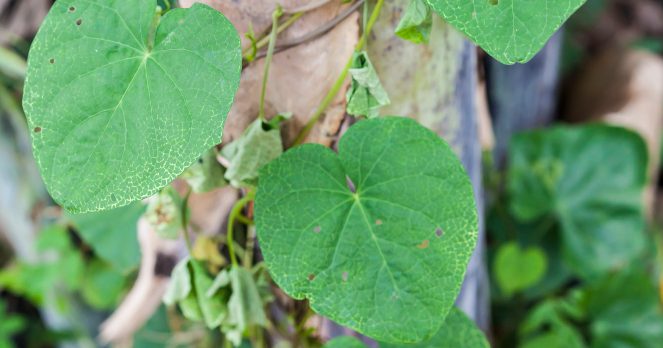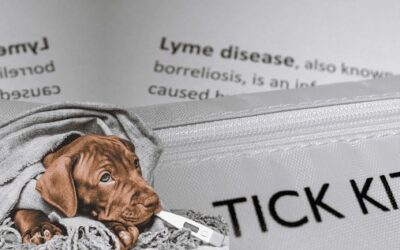Do Poison Ivy, Oak, and Sumac Affect Dogs?

Updated September 3, 2025
Preparing your outdoor adventures with your canine companion doesn’t just ensure enjoyable experiences; it also helps protect both you and your furry friend from potential botanical hazards that lurk in many natural environments. Dogs can encounter numerous plant-based threats during their explorations, but few are as notorious or widespread as poison ivy, poison oak, and poison sumac. These plants have earned their fearsome reputation through countless painful human encounters, leaving many pet owners wondering whether their four-legged family members face similar risks when venturing into areas where these toxic plants thrive.
That’s why it’s essential to understand how these plants affect dogs and what steps you can take to keep your pet safe during outdoor activities. Here are some helpful facts and tips to make your hiking and camping adventures more enjoyable and stress-free for both you and your furry friend.
The Good News: Dogs Are Naturally Protected
The first concern you should address is understanding that dogs possess remarkable natural resistance to the effects of poison ivy, oak, and sumac compared to their human counterparts. Dogs are significantly less susceptible to developing clinically significant reactions even after direct exposure to these plants, which is great news for pet owners who love outdoor adventures.
This impressive resistance stems primarily from the dense, protective fur coat that covers most of a dog’s body, creating multiple layers of defense against the oily urushiol compound that causes the characteristic allergic reactions. The canine skin also maintains different pH levels compared to humans, typically ranging between 5.5 and 7.5, which helps reduce urushiol binding and penetration.
Understanding the Chemical Behind the Reaction
The active compound responsible for reactions to poison ivy, oak, and sumac is urushiol, a potent mixture that represents one of nature’s most powerful contact allergens. This colorless or pale yellow oily resin is found in every part of these plants, including leaves, stems, roots, flowers, and berries, maintaining its reactive properties for extended periods even after the plant material has died.
Urushiol can remain active and capable of causing reactions for up to five years on inanimate objects, and it requires remarkably small quantities to trigger severe responses in sensitive individuals. As little as 50 micrograms can cause significant reactions in humans, though dogs typically require much higher exposure levels to show any symptoms due to their natural protective barriers.
When Dogs Can Be Affected
While dogs demonstrate impressive resistance to these plants, they aren’t completely immune to their effects, particularly when their natural protective barriers are compromised. When reactions do occur in dogs, they typically show up in areas with minimal hair coverage or naturally thinner skin.
The most commonly affected areas include the belly, where hair density is reduced, the spaces between toes, where moisture can help the plant oils penetrate, the inner surfaces of ears, and facial regions around the muzzle and nose, where dogs may come into direct contact with plants during exploration.
Keep an eye out for red, inflamed skin accompanied by itching that can lead to secondary complications through excessive scratching. Affected dogs may develop small bumps, and in severe cases, blistering can occur, though this is relatively rare compared to human reactions.
The Bigger Risk: When Dogs Eat These Plants
Perhaps more concerning than skin contact is the potential for dogs to ingest portions of these toxic plants, either through curiosity or while grooming contaminated fur. Internal exposure can produce gastrointestinal irritation and effects that may be more serious than typical skin reactions.
Dogs that consume significant quantities of these plants can develop severe oral irritation, leading to excessive drooling, difficulty swallowing, and, in some instances, breathing difficulties. The digestive effects can include vomiting, diarrhea, and stomach discomfort, with symptoms typically appearing within 2 to 6 hours of consumption.
If you suspect your dog has eaten any part of these plants, contact your veterinarian immediately, as the potential for serious complications exists, particularly in smaller breeds, puppies, or dogs with pre-existing health conditions.
Your Dog Can Spread the Plant Oils to You
One of the most significant concerns involves your pet’s potential role as an unwitting carrier of urushiol to human family members. The plant oils can stick to animal fur with remarkable staying power, remaining active and transferable for days or weeks after initial plant contact, particularly in dogs with dense, oily coats.
This has been documented in numerous cases where people developed characteristic poison ivy rashes despite having no direct contact with the plants themselves. The transfer typically occurs through normal pet interactions like petting, grooming, or cuddling, with the oils moving from contaminated fur to human skin.
This carrier effect can be particularly problematic because pet owners may not immediately recognize the source of their exposure, leading to delayed cleaning efforts and potentially more severe reactions.
Prevention: Keeping Your Dog Safe
Effective prevention requires understanding where these plants typically grow and taking appropriate precautions during outdoor activities. These plants prefer woodland edges, disturbed soils, fence lines, and areas with partial sun exposure where they can establish extensive root systems.
Learning to identify these plants becomes crucial, as their appearance changes dramatically throughout the year. Spring shows bright green tender leaves, summer displays the characteristic three-leaflet pattern, and fall foliage turns brilliant reds and yellows that can be particularly attractive but equally dangerous.
Here are some practical prevention tips:
Consider keeping your dog on a leash in unfamiliar wooded areas to better control their exploration. Stick to well-maintained trails when possible, and regularly survey your own property to identify and safely remove these plants before they become established.
What to Do if Exposure Occurs
When suspected exposure happens, immediate action can significantly reduce reaction severity in both dogs and their handlers. Quick response while the plant oils remain on fur surfaces provides maximum benefit.
Avoid direct contact with the potentially contaminated animal while preparing protective equipment, including disposable gloves and protective clothing. Use cool water rather than warm water for bathing, as heat can open pores and help the oils absorb into the skin. Additionally, consider using dish detergent or specialized pet shampoos designed to remove oily substances.
Pay particular attention to areas most likely to have contacted the plants, including paws, belly, face, and any areas where the dog may have rubbed against vegetation. Remember to wash your dog’s collar, leash, and any toys or equipment that may have been contaminated.
When to Seek Professional Help
While many exposure cases can be managed through immediate home care and monitoring, certain circumstances warrant prompt veterinary evaluation. Contact your veterinarian if your dog displays significant skin reactions, including extensive redness, swelling, or signs of infection from scratching.
Any suspected plant ingestion should be evaluated by veterinary professionals, particularly if your dog shows signs of mouth irritation, difficulty swallowing, excessive drooling, or stomach upset. Professional treatment options may include medications to reduce inflammation, antihistamines for itching control, and, in severe cases, stronger treatments to suppress inflammatory responses.
Medicated shampoos containing ingredients like oatmeal or aloe vera can provide effective relief and promote healing in affected animals, while antibiotic therapy may be necessary if infections develop from scratched skin.
Managing Your Property
Effective long-term management requires understanding these plants’ growth patterns to develop sustainable control strategies. Consider both immediate removal needs and prevention of future growth when planning your approach.
Professional landscape management often involves strategic treatment during specific growth phases when plants are most susceptible, though these methods require careful consideration of environmental impacts. Alternative strategies include repeated mechanical removal during optimal timing, competitive planting with dense ground covers, and strategic use of barriers to prevent seed spread.
Also consider soil conditions, moisture levels, and light exposure when making landscaping decisions that naturally reduce the likelihood of these plants establishing themselves while maintaining attractive outdoor spaces.
Special Considerations for Vulnerable Dogs
Certain dogs may face elevated risks due to various factors that compromise their natural protective mechanisms. Breeds with naturally thin coat coverage, including many sight hounds and hairless varieties, may lack the protective barrier that shields most dogs from direct skin contact.
Elderly animals often experience age-related changes in skin integrity and immune function that can increase their susceptibility to environmental irritants. Puppies represent another potentially vulnerable group due to their developing immune systems, natural curiosity, and tendencies to explore by putting things in their mouths.
Dogs with existing skin conditions such as allergies or other sensitivities may experience more severe reactions or longer healing times when exposed, making prevention strategies particularly important for these animals.
Emergency Preparedness
Prepare for potential exposures by familiarizing yourself with the nearest emergency veterinary clinics and keeping their contact information readily available. In case your dog experiences any severe reactions during outdoor activities, knowing where to go for immediate care can make a significant difference.
Consider preparing a pet first-aid kit that includes items such as conforming bandages, a digital thermometer, and skin-cleaning wipes. Having these supplies easily accessible can help you respond quickly to minor issues while determining whether professional veterinary care is needed.
Update your pet’s microchip information regularly, as outdoor adventures can sometimes lead to lost pets if they become startled or confused during reactions or treatment procedures.
Creating Safe Outdoor Environments
Developing and maintaining safe outdoor spaces for dogs requires ongoing attention to plant identification and environmental management that balances outdoor recreation benefits with appropriate safety precautions. Regular maintenance schedules should include systematic surveys for problematic plants and prompt removal using proper safety protocols.
Property boundaries, fence lines, and transition areas between maintained landscapes and natural areas require particular attention, as these locations often provide ideal conditions for the establishment and spread of poison ivy, oak, and sumac.
How Can Pet Insurance Help You if Your Dog Needs Treatment?
Pet insurance can be a valuable tool in managing the costs of treating a dog’s veterinary expenses. By having a pet insurance policy in place, you can have peace of mind knowing that you can provide medical care for your furry companion without worrying about the financial burden. Pet insurance can help cover the costs of veterinary consultations, diagnostic tests, medications, and even specialized treatments if required.
Reimbursement
This method is the most common for pet insurance companies. You pay out of pocket for the veterinarian bill, and then the insurance company reimburses you for what’s covered under the insurance plan. The steps look like this.
- You pay the vet bill after your dog’s visit.
- You fill out the pet insurance claim form.
- Submit the claim form and other required documentation to the insurer.
- After the claim is approved, you will be reimbursed for eligible expenses.
Odie’s Illness and Injury pet health insurance plan offers comprehensive coverage for your dog.
What Does Odie Pet Insurance Cover?
Pet insurance covers various veterinary expenses, providing financial protection and peace of mind for pet owners. Here are the details of the coverage options offered by Odie Pet Insurance:
Illness & Injury Plan
The Illness & Injury Plan is an all-inclusive insurance plan designed to cover a wide range of medical needs for your pet. This plan includes comprehensive coverage for various illnesses, injuries, and veterinary services. Some of the covered items include:
- Veterinary exams and consultations
- Diagnostics (e.g., X-rays, lab tests)
- Prescribed medications
- Surgeries and hospitalization
- Rehabilitation, acupuncture, or chiropractic treatments
- Medically necessary supplies
- Euthanasia and cremation
The Wellness Plan
The Wellness Plan is a monthly membership that focuses on preventive care and covers routine veterinary services.
- Provides reimbursements for routine care items such as wellness visits (exams and vaccines), testing and parasite prevention, dental cleanings and at-home dental care, vitamins, supplements, and more.
- Through Odie’s partnership with Petivity, a leader in smart pet products and proactive care, Wellness Plan members can also receive reimbursements for Petivity devices and health kits, as well as eligible Purina food and supplements.
- Total reimbursement up to $700 per year.





